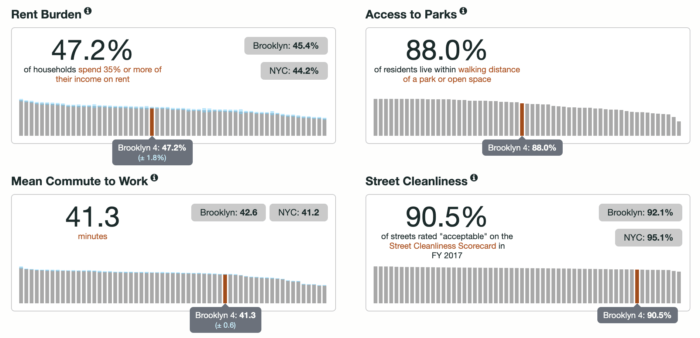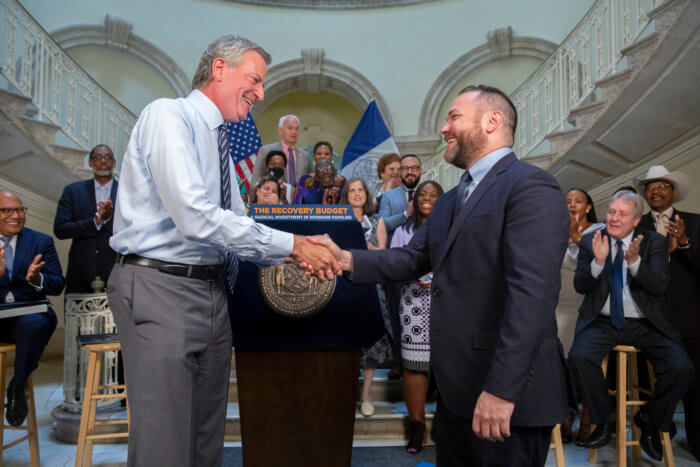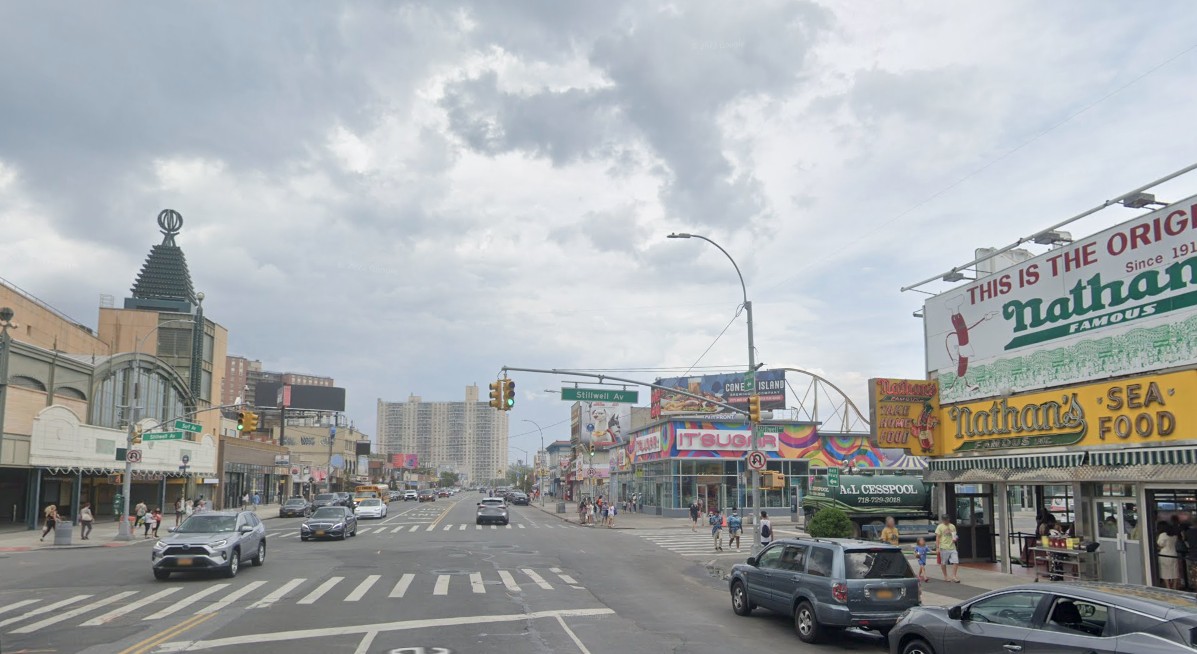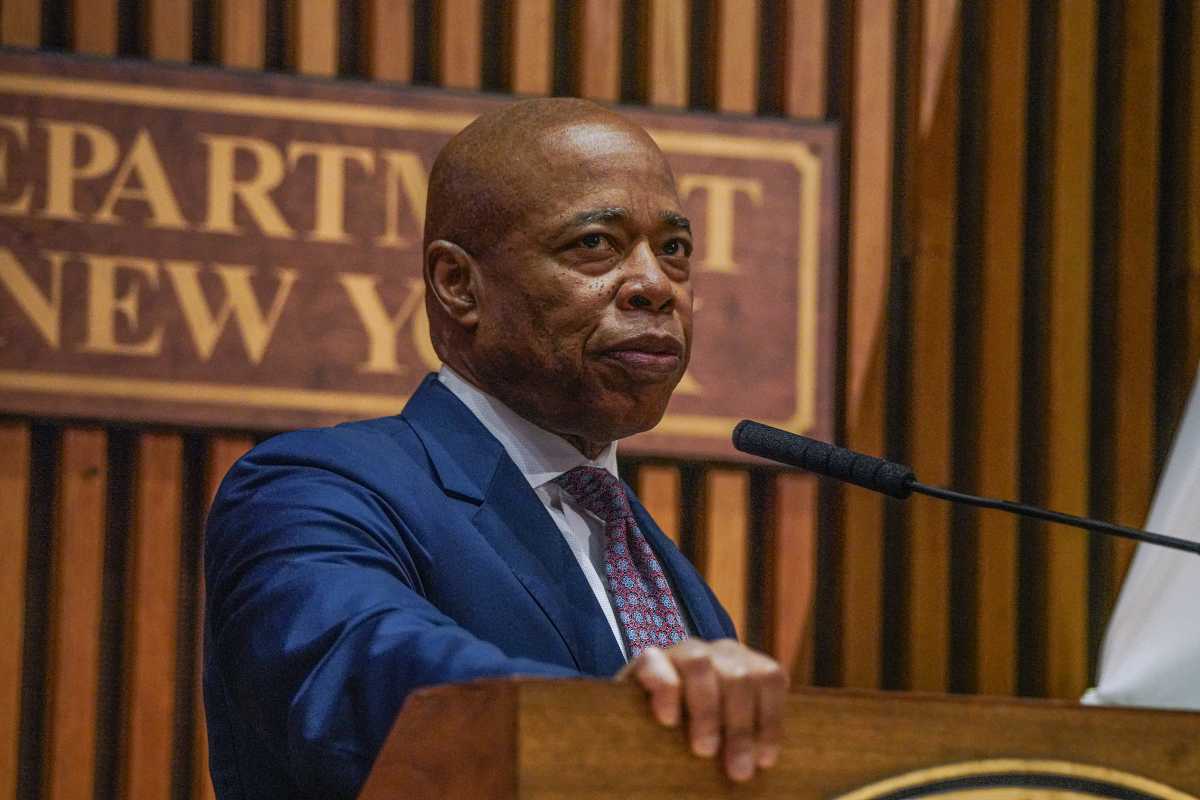Brooklyn’s Community Board 4 is changing the way they handle their contribution to New York City’s long and complex budget process, creating a series of short surveys they’re hoping will engage the interest and knowledge of their roughly 130,000 residents.
Every summer, the city’s community boards are responsible for assessing the financial needs of their districts and submitting their budget requests and priorities to the Mayor’s Office of Budget and Management by the end of October.
There are 59 community boards across the city, each with their own method for assessing their community’s needs, but a few things are the same. Each board is required to have a public meeting about the budget in the fall, where committees and members of the public can come together to discuss and re-prioritize budget requests, and each submits a long survey and written statement of needs.
In Bushwick’s CB4, writing the statement of needs usually falls to Celestina Leon, the district manager. Leon runs the board’s office — helping to organize meetings, taking phone calls and emails — generally, keeping things running. The scope of the job means she has access to a lot of information, and takes a lot of complaints.
“I’m in this position, I’m able to extrapolate data, information from our complaint system, I’m able to take 311 data, NYC Open Data, from all of our meetings — but I’m one person,” Leon said. “Even if I was somehow able to piece all that together, I still don’t know everything.”
What she did know was that in the years she’s served as the district manager, there seemed to be a gap in what the community was worried about day-to-day and what was showing up in the annual statement of community needs and budget requests, and that’s what inspired her to create the surveys.

“When I write something as broad and as extensive as this report, I want to make sure I’m getting as much information from the ground as possible,” Leon said. “In addition to wanting to just engage the community more.”
Community boards are often the loudest voices on local issues, but they don’t always accurately reflect the surrounding community, often skewing whiter and more male, and with often-lengthy meetings scheduled on weekday evenings, it can be hard for neighbors to attend.
Hosting meetings virtually increased attendance, but Leon said the budget meetings in particular might be more intimidating, especially for people unfamiliar with the board.
There are seven surveys in total, covering health and human services, youth and education, public safety, core infrastructure, housing and land use, transportation, and parks and community facilities. Each should only take a few minutes to complete, Leon said, and neighbors don’t have to fill out all of them — just the ones they feel strongly about.
“You’re not thinking about everything in the entire neighborhood,” she said. “You’re thinking about the things that matter to you most, or the things that most affect you.”
Pushing the surveys out online is likely to engage more people than usual, Leon said, but she’s still hoping to take the effort out into the real world to reach people without easy access to the internet.
“Part of what we’ll be doing with it, hopefully in the next few weeks, is extending these invitations with paper surveys to senior citizens, older adults,” she said, “whether it’s our senior centers, or senior resident’s buildings, trying to get more of a ground-level word out just in case there are folks that aren’t necessarily online but also want to chime in.”
Leon is hoping CB4 will be getting a fellow from the Fund of the City of New York to help sift through the data collected by the surveys and compile it into an easier-to-manage format for the various committees to read and consider.
“In this case, Brooklyn Community Board 4 really went above and beyond in breaking this into these multiple surveys,” said Chris Polack, an associate analyst with the city’s planning department. “They get really granular information, really making sure that the information they’re collecting is representative of the broader community.”
Polack and his team work alongside each community board as they work on their budget requests, providing trainings and information breaking down exactly what they can ask for and providing a survey of their own.
The goal, he said, is to make it as easy as possible for boards to provide an inclusive look at their communities.
Anyone who wants to fill out a survey should do so by the last week in October, Leon said, so the board can compile the information and send out their initial requests to the OMB by their Oct. 31 deadline.
Early next year, the mayor will release a preliminary outline of the budget, which the community boards will assess and respond to after holding another budget meeting. After that, it’s largely in the hands of the City Council, who will vote to approve it in June.

The city will also release the final community needs statements early next year, which might show the impact of CB4’s surveys. Especially important will be the district’s top three concerns, as identified by the needs statement. For the last few years, they’ve been the same. The first is affordable housing, the second is zoning, and the third is roadway maintenance.
Leon suspected that affordable housing and zoning will retain their spots as the top two concerns, but roadway maintenance may get replaced. She also hopes that the more detailed data collected in the surveys will help to justify to the city why the board prioritizes certain projects, increasing the likelihood that they’ll get funded.
Her efforts to engage larger parts of the community and collect broader, more detailed data go beyond just the budget, though. Even once the process is done, she said, community members might be more inclined to take up their own fights.
“What I would love to see with this type of project is people being able to easily understand some of those nuances that aren’t transparent in the community, but still affect people’s quality of life,” she said. “Just because it is complicated shouldn’t be a deterrent from doing it, but it should be the very reason why we have more folks from different areas taking the lead.”
“Maybe the next step is getting petitions together, and then maybe the next step is having a meeting with your elected official about why you’re passionate about a project. And that’s really how things get done. As much as this is for data collection for us, it’s also about educating the community.”
Are you a resident of Community Board 4? Click here to find and fill out the Community Needs Surveys. Not sure which board you live in? Find out here.

























